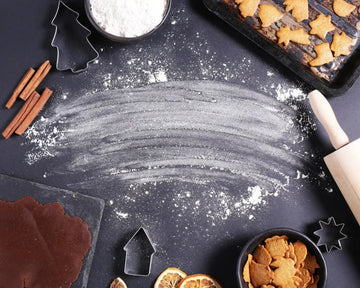There are many ingredients that come with a recipe calling for baking, but nothing can be more confusing than trying to understand the difference between baking soda and baking powder. Baking soda and baking powder are both leavening agents that help your baked goods rise. However, they are not the same — each has its own unique properties and uses. In this blog post, we’ll explore the differences between baking soda and baking powder, so you can use each one correctly in all of your baking projects.
What is Baking Powder?
Baking powder is a leavening agent that is commonly used in baking. It is a mixture of sodium bicarbonate and an acid, such as cream of tartar. When combined with moisture and heat, the sodium bicarbonate reacts with the acid to release carbon dioxide gas. This gas helps to leaven or rise baked goods.
What is Baking Soda?
Baking soda is a leavening agent that is used in baking. It is a white powder that is made up of sodium bicarbonate, which is a compound that occurs naturally in many mineral springs. When baking soda is combined with an acidic ingredient, such as yogurt or lemon juice, it produces carbon dioxide gas. This gas helps to leaven baked goods and makes them light and fluffy.
Baking soda has been used as a leavening agent for centuries. In the early 1800s, people began using it to make bread and cakes rise. Today, it is still a popular ingredient in many recipes, including cookies, muffins, and pancakes.
Also Read: Heavy Cream vs. Whipped Cream vs. Fresh Cream
Baking Powder vs Soda: When to Use Each
When it comes to baking, there are two leavening agents that are commonly used: baking soda and baking powder. Both of these ingredients help to produce lighter, fluffier baked goods. But what is the difference between these two leaveners? And when should you use each one?
Baking soda is a pure leavening agent. This means that it will cause your batter or dough to rise on its own. Baking powder, on the other hand, is a combination of a leavening agent and an acidic ingredient. When combined with liquid, the acidic ingredient in baking powder will react with the baking soda to create carbon dioxide gas. This gas is what helps to make your baked goods light and fluffy.
So, when should you use each one? If a recipe calls for baking soda, it generally means that there is no other acid present in the recipe (such as yogurt or buttermilk). Baking powder can be used in recipes that contain an acid, or in recipes where you want a little extra lift (such as pancakes or muffins).
Now that you know the difference between these two common leaveners, you’ll be able to choose the right one for your next baking project!
Why Do Recipes Include Both?
When it comes to baking, there is a big difference between baking soda and baking powder. Baking soda is a leavening agent that helps to produce light and fluffy baked goods, while baking powder is a raising agent that helps to produce taller baked goods.
So, why do recipes include both baking soda and baking powder? The answer lies in the fact that each one has a different reaction time. Baking soda starts to work as soon as it’s added to the batter or dough, while baking powder takes a few minutes to start working.
This means that if you want your baked goods to rise quickly, you should use baking soda. However, if you want your baked goods to have a bit more time to rise before they go into the oven, you should use baking powder.
How Long Can They Stay Fresh?
Baking soda and baking powder are two common leavening agents used in baking. Both baking soda and baking powder produce carbon dioxide gas when they come in contact with an acidic ingredient, such as buttermilk or yogurt. This carbon dioxide gas causes the batter to rise, resulting in a lighter and fluffier final product.
So, how long do these leavening agents stay fresh? Baking soda can last indefinitely if it is stored in an airtight container in a cool, dry place. Baking powder, on the other hand, has a limited shelf life of about six months. After that point, it will no longer be effective at producing carbon dioxide gas and should be replaced.
Substituting in the Recipe
Baking soda and baking powder are both leavening agents, which means they help baked goods to rise. When substituting one for the other, it’s important to keep the following in mind:
- Baking soda is about four times as powerful as baking powder. This means that you need to use only 1/4 as much baking soda as you would baking powder.
- Baking soda also reacts with acidic ingredients, such as buttermilk or yogurt. For this reason, it’s best to use baking soda in recipes that also contain an acidic ingredient.
- Baking powder is a combination of baking soda and cream of tartar. It’s best to use a recipe that specifically calls for baking powder, rather than trying to substitute it yourself.
Conclusion
Baking soda and baking powder are two key ingredients in many recipes. Although they may look similar, their chemistry and uses can be very different. Knowing the difference between baking soda and baking powder is important for successfully creating delicious treats! Baking soda should be used in recipes that require chemical leavening reaction while baking powder is better suited for recipes where it will act as a raising agent. Understanding the difference between these two pantry items is essential to becoming an expert baker because one wrong ingredient can make all the difference!










